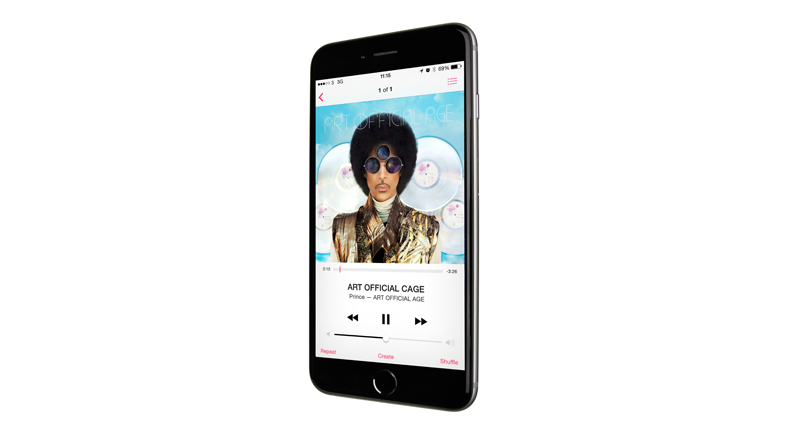What Hi-Fi? Verdict
Big and beautiful, the iPhone 6 Plus is all set to take the fight to rival phablets. If only it sounded a little bit better...
Pros
- +
Premium design and feel
- +
Excellent screen
- +
Balanced colours
- +
Great camera for a smartphone
Cons
- -
Sounds out-of-sorts for an Apple device
Why you can trust What Hi-Fi?
So the inevitable has happened. Apple has super-sized its smartphone range with the addition of the iPhone 6 Plus. It was only a matter of time.
After all, the success of 5in+ Android alternatives from LG, Sony and Samsung has shown Apple there’s a demand, and that those keen on a big screen won’t settle for anything smaller...
Design
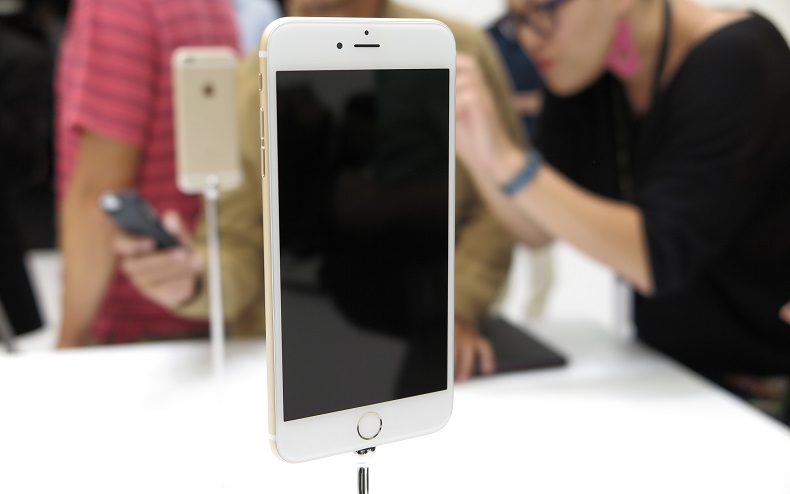
It’s hard not to fall for the charms of the 6 Plus, despite the fact it’s a big unit. Those thinking of moving from an iPhone 5s might find it a thumb-stretch too far, but it’s not insurmountable.
And despite standing over a centimetre taller that many of its key rivals, the iPhone 6 Plus still manages to cut enough calories to be thinner. The way the aluminium body wraps around the edges and blends with the subtle curve from the edges of the glass screen is aesthetically impressive, and the body feels great in-hand.
This is about as desirable as phablets get at the moment... And before you ask, no, the 6 Plus hasn’t developed any bendiness while in our possession.
Granted, we haven’t spent hours trying to purposefully snap it in half, nor have we been tramping to the shops in spray-on, skinny jeans with the phone wedged in our back pocket. All we can report is that at the moment, we won’t be adding fuel to the ‘bendgate’ fire.
Like the iPhone 6, the 6 Plus features slimmer, longer, volume buttons to the left of the screen, with the power button now moving from the top edge to the right-hand side.
The headphone jack sits along the bottom, next to the mic, lightning socket and single speaker grille, as opposed to the double grille on the iPhone 5s.
Screen
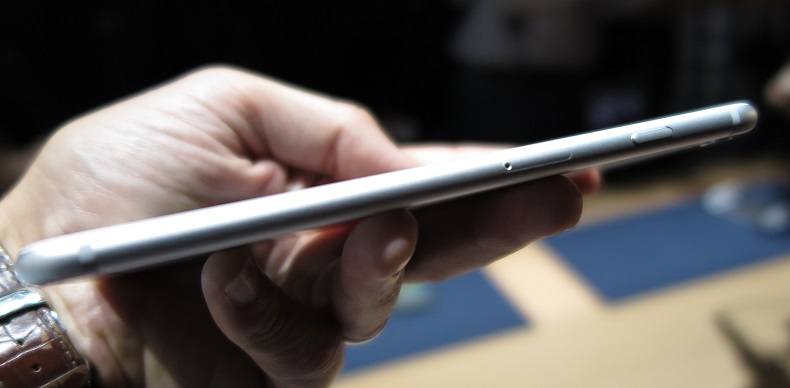
Measuring 5.5in, Apple now has the screen size to match its closest rivals. But on paper, there’s still a little work to do to match the LG G3’s 5.5in Quad HD resolution and 534ppi pixel density.
But as we’ve learnt over time, picture quality is more than just a numbers game. The screen on the 6 Plus is also sRGB accurate, with Apple claiming improved colour performance.
It’s an IPS liquid crystal display behind ion-strengthened glass. Apple has tried to make the most of the larger screen, too, with apps such as Messages optimised for the bigger display.
Turn the phone to landscape, and the view alters to reveal a message list on the left and message contents on the right. Even the home screen rotates, like an iPad Air or mini, which opens it up for proper two-handed use.
Video
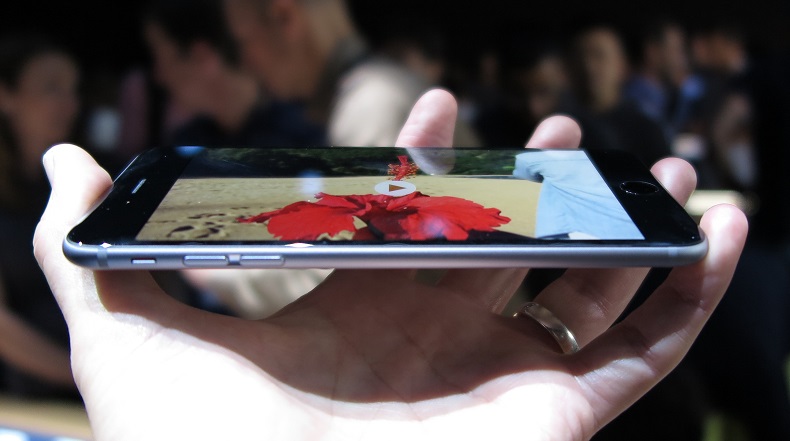
There’s a lot to like about the way the iPhone handles video playback. Watching a couple of episodes of 24 via iTunes, the 6 Plus puts out a very watchable and detailed picture.
Whites are pure, while blacks show good depth and solidity. Where the two meet in the shadows, the iPhone shows a good deal of insight. There’s plenty of texture and realism on Jack’s weathered face and battle-scarred leather jacket in 24.
Variations in skin tone are easy to see and motion is handled with a great deal of care and consideration. Switch to a short clip of Family Guy and the iPhone shows it’s a smart judge of colour.
The 6 Plus handles the colourful hues of Quahog and its residents with a deftness that some rivals struggle to match. The image is punchy and vibrant without appearing overblown and saturated.
Sound
Sound quality has been a traditional strength for Apple products over the years, and the fact we already rate the iPhone 6 is a promising sign. In reality though, the 6 Plus doesn’t hit the same dizzy heights.
The Plus seems to lose its way when it comes to timing and following the tempo of a track. Tunes don’t have the same level of fluidity and musicality as they do when heard through Apple’s smaller handset.
The fluctuating pace of alt-J’s Breezeblocks just doesn’t come across as accurately or convincingly as it does on the standard iPhone 6.
There’s a decent sense of solidity and weight but the Plus sounds slightly slower, and lacks a little zip and drive.
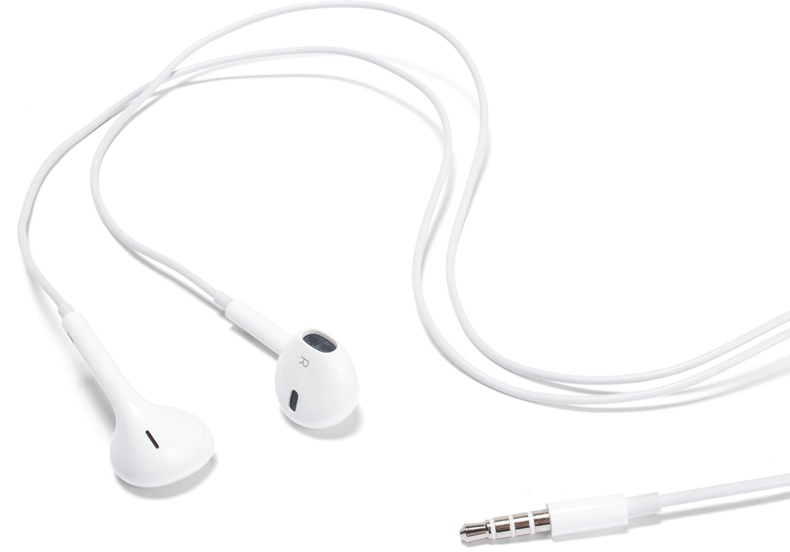
The 6 Plus also sounds slightly muddier and doesn’t deliver the clarity and dynamic thrust that makes the standard model such an engaging listen.
Unfortunately it appears Apple’s buyout of Beats came a little late to have brand new headphones bundled with the iPhone 6 Plus. Instead, you get an ordinary pair of Apple Earpods and, while they do a job, they’re no match for a decent pair of in-ears such as the SoundMagic E10S or Sony MDR-EX650AP.
The mono speaker on the bottom of the handset remains, but with the grille just on the right-hand side now. Music comes at you loud and clear but the HTC One (M8)’s front-facing stereo speakers still set the standard.
Camera
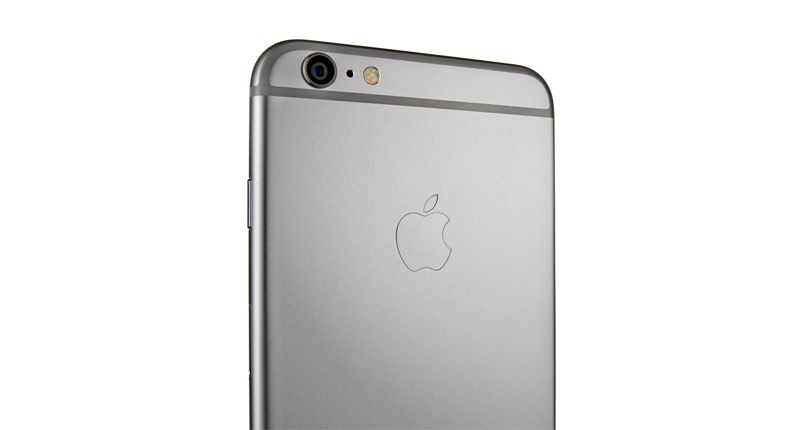
The camera is similar to the iPhone 6’s – it uses the same 8MP sensor and features the same, autofocus and exposure control, but it also includes optical image stabilisation.
The iPhone camera has always been a great alternative to a point-and-shoot compact, even though rivals brag about the number of megapixels offered by their hero handsets.
But the 6 Plus isn’t at a disadvantage. You can still get some superb results, and in good light, images are sharp, with minimal noise, superb detail retrieval and a natural colour balance.
The speed with which the camera zips into focus is impressive as is brevity with which the handset processes your pictures. The image stabilisation also gives some pretty impressive results with stills and video. In normal conditions, images look natural and don’t appear overly processed.
Specs
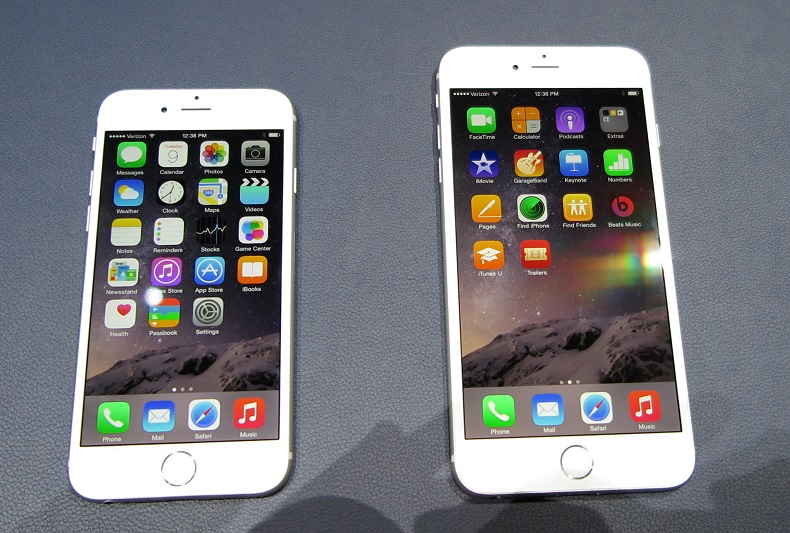
The iPhone 6 Plus carries the same A8 chip as the smaller ‘6’ (shown left), and the user experience is pretty much mirrored on the larger handset. Flicking between browser windows and different apps serves up no problems whatsoever, while 3D gaming with something like FIFA 15 Ultimate Team is a relatively smooth experience.
Apple claim the battery life on the 6 Plus should be good for around 40 hours video and 80 hours audio. During out battery rundown test (wi-fi on, Bluetooth off, looping a 720p video at half-brightness) we found the 2916mAh battery last 10 hours 32 minutes.
This easily beats the likes of the G3, and just pips the Moto X, but lags some way behind the 13 hours-plus the Xperia Z3 and Note 4 notched up.
The battery usage really depends how heavy a user you are, but we found the Plus could get through around a day-and-a-half on moderate use and the phone just survived a full day when we had Google Maps, Spotify and Bluetooth all turned on during one recent road trip.
At least you can now see which apps are sapping all of your battery life and adjust accordingly. Storage options are the same as they are for the normal ‘6’ with 16GB, 64GB and 128GB in the offing.
In all likelihood, the most popular will be the 64GB, but the 128GB could come in handy if you’re a frequent photographer and have a huge library of music to juggle.
Think carefully, because there’s no way of expanding via a memory card.
MORE: iPhone 6 Plus vs iPhone 6
Features
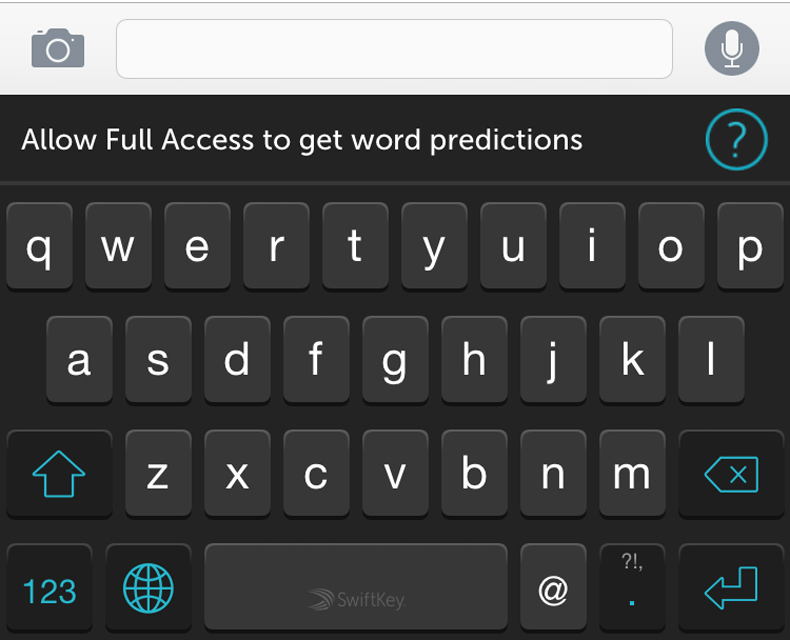
The iPhone 6 Plus comes with iOS 8 running out of the box, although you will need to check for the very latest software version when you go through set-up. iOS 8 brings a number of usability tweaks to make the iPhone experience even more intuitive.
This includes the ability to change the stock Apple keyboard, a feature that’s been in demand for a while, giving access to popular alternatives such as ‘Swype’ and ‘SwiftKey’.
The standard keyboard has also had a tweak too, adding predictive text, though you can open and close this by swiping up or down at the top edge of the keyboard.
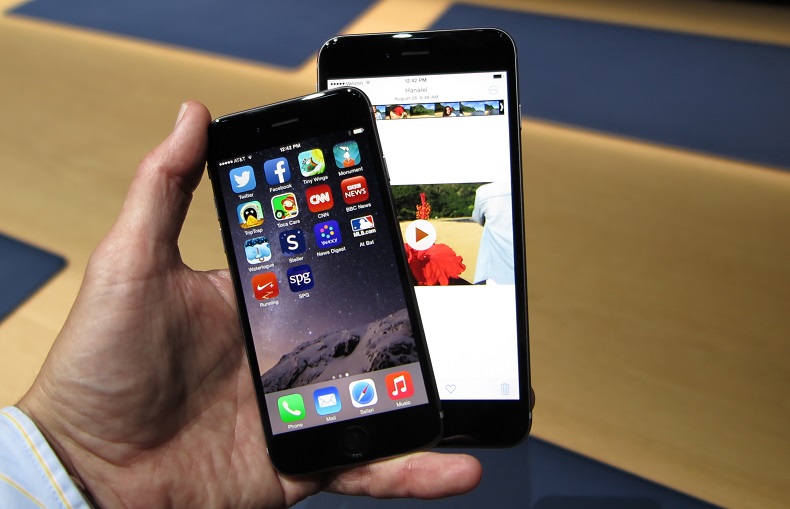
Other additions include new mail commands for easier organising of emails, a smoother shared experience between iPhone, iPad and Mac, notifications that offer the opportunity for a ‘quick reply’ without leaving the app you’re in and a new Health app, which can pull in the data from various fitness apps to give you an in-depth look at your activity levels throughout the day.
Like the '6', the 6 Plus also gets its own near-field communication (NFC) chip. Unfortunately it can’t be used to pair the device with wireless headphones or speakers.
It’s actually being reserved for the Apple Pay scheme, currently only earmarked for the US.
Verdict
Apple wants a slice of the phablet pie, and they’re undoubtedly going to get it thanks to the iPhone 6 Plus. It’s a gorgeous handset, works in tandem with a great OS and is topped off with a brilliant app ecosystem.
The camera’s excellent, as is the picture quality on the 5.5in screen. We’re only disappointed because of the Plus’s dip in sound quality. It seems strange and very un-Apple-like but the phone just doesn’t match its smaller sibling in the musicality stakes.
And there's a big jump in price (£80) between the 16GB model and the 64GB, with no 32GB version available, which seems odd.
If you can live without the bigger screen, then our money would definitely go on the iPhone 6. But, if you’re convinced bigger is better, you could do worse than get to grips with the 6 Plus.
MORE: The evolution of the Apple iPhone
MORE: Best smartphones 2014
What Hi-Fi?, founded in 1976, is the world's leading independent guide to buying and owning hi-fi and home entertainment products. Our comprehensive tests help you buy the very best for your money, with our advice sections giving you step-by-step information on how to get even more from your music and movies. Everything is tested by our dedicated team of in-house reviewers in our custom-built test rooms in London, Reading and Bath. Our coveted five-star rating and Awards are recognised all over the world as the ultimate seal of approval, so you can buy with absolute confidence.
